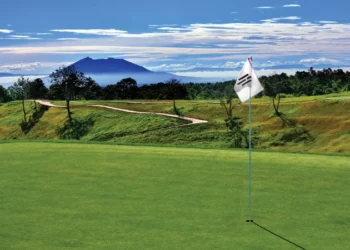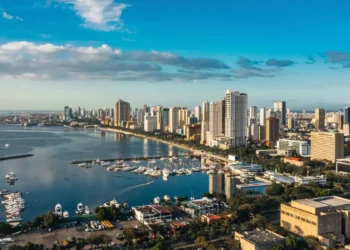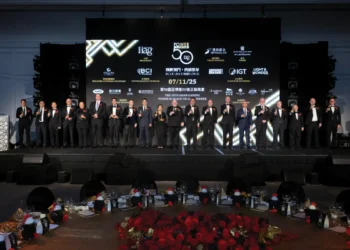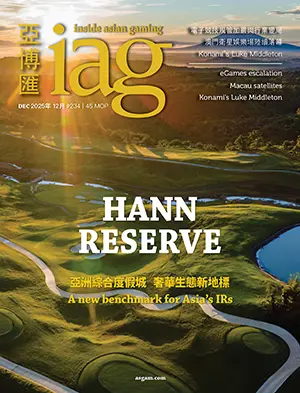IAG speaks with Nagasaki Prefecture Planning Division’s IR Promotion Assistant Sectional Chief, Masahiko Kunihiro, to discuss the progress of Nagasaki’s IR bid.
The theme park Huis Ten Bosch is located in Sasebo City, Nagasaki Prefecture, and attracts millions of visitors each year. This is the location Nagasaki has in mind for its IR bid. Unlike the sprawling metropolises of Osaka and Yokohama, Nagasaki is considered among the leading contenders to win what is likely to be a single regional IR license to be issued by the national government in 2021.
While the national government’s basic policy is facing delays due to IR-related scandals and the COVID-19 pandemic, Nagasaki announced its IR Basic Concept for Kyushu/Nagasaki toward the beginning of April. The total number of visitors is estimated to be 6.9 million to 9.3 million annually with a construction cost of between JPY 350 billion (US$3.25 billion) to JPY 460 billion (US$4.27 billion).

IAG took this opportunity to interview the Nagasaki Prefecture Planning Division’s IR Promotion Assistant Sectional Chief, Masahiko Kunihiro, about Nagasaki’s potential.
Shintaro Kamimura: Why is Nagasaki prefecture well-suited to developing an IR?
Masahiko Kunihiro: There are three main points. First of all, the candidate site is a scenic location that faces Omura Bay with many beautiful islands. These can be destinations for short cruises and overnight excursions, departing from the candidate site. In addition, Kyushu, especially Nagasaki, has a long history of being open to people from a variety of countries and of rich tourism resources. There are two World Heritage Sites in Nagasaki prefecture, and the region has a unique food culture, making it an attractive destination.
The second is that this is not just a bid made by Nagasaki, it is a collective effort by the entire island of Kyushu along with Okinawa and Yamaguchi. There is a lot of potential for developing tourism in the surrounding areas and procuring food and souvenirs from these areas. There are five international airports within a two-hour vicinity of the site, making it the perfect point of entrance to Japan. We already have the infrastructure of Huis Ten Bosch in place, reducing the procedures and burden on the environment.
The third point is regional consensus formation. The Prefectural Assembly and Sasebo City Council are over 90% in support of the bid, and in a written survey of local residents, the “yeas” outnumbered the “nays.” Under Japan’s IR system design, there is a rule that requires the consent of the relevant councils at the time of renewal a number of years after establishment.
SK: How is Nagasaki coping with the COVID-19 outbreak that is raging throughout the world?
MK: Just like other prefectures we have canceled events and, of course, decreased inbound travel. We are taking measures to keep the effects to a minimum based on the national government’s actions.
SK: Have you considered measures to have in place after the IR opens in case of a future pandemic or a disaster?
MK: For such a situation, we plan to establish a headquarters for such measures within the prefectural office and take measures in cooperation with related cities and towns, and the operator.
At this point in time we are already considering providing, for example, the massive MICE facilities as an evacuation site in case of a disaster. However, it will be a private facility, so this will have to be discussed with the operator.
SK: More immediately, the issue of Tsushima Island, which is part of Nagasaki Prefecture, has worsened Japan-South Korea relations and resulted in a sharp decrease in tourists from South Korea. Are issues such as these and the impact they can have on tourism a concern in the long-term?
MK: We are also considering measures to ensure regional balance so there won’t be too much of a deviation in visitors from certain regions, such as attracting more international air routes.
In the short term, I think our main demographic will be wealthy visitors from China, but if we rely solely on that, it does of course come with political risk, so we are conscious that we need to disperse the risk as much as possible while consulting with the selected IR operator.
In the medium-term, we hope to refine the IR in order to attract customers from all over the world, including Southeast Asia, Europe and the Americas.

SK: There have been reports of more opposition in regional areas lately. Can you shed some light on this?
MK: We have held 20 briefings so far in nearby areas. The most recent is not exactly opposition. The residents of the surrounding areas want to continue to live securely and safely, and due to ongoing concerns, there was a call to create a place for exchange of opinions and discussion. We hope to to gain an understanding of the various perspectives and find a variety of opportunities for this, continue to hold briefings with thorough explanations provided by the prefecture and city, and promote understanding of all residents and resolve any concerns they may have.
SK: What exactly are some of those concerns?
MK: One concern is traffic congestion with the increase in visitors. Another is that the landscape will change.
SK: Huis Ten Bosch is known mainly as a destination for young people, for grade school trips or family vacations, and that will probably continue when an IR opens. What are your thoughts on this demographic?
MK: We can follow the examples of other countries where the casino floor is hidden behind partitions and other routes are installed. We hope to create a destination that is appealing to all ages, from children to the elderly.
SK: What are the obstacles you face while waiting for government certification?
MK: We have some pending transportation and infrastructure improvements, so ideally we can make progress on that front and increase our chances at certification. Certification is not the end-goal, it’s just the start of a long road that we hope to have the opportunity to travel. We are working hard on this project on a daily basis while keeping a long-view perspective.
































